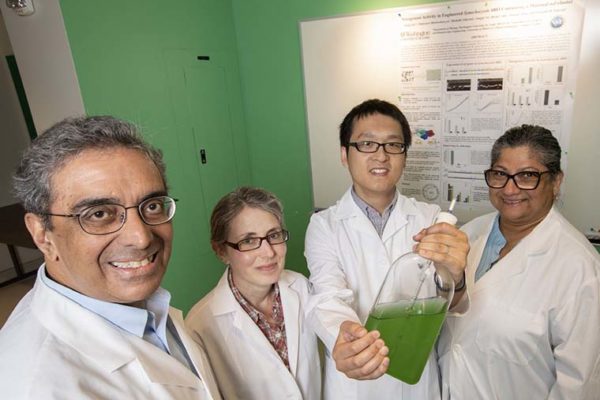Researchers engineer bacteria that create fertilizer out of thin air
A team at Washington University in St. Louis has created a bacteria that uses photosynthesis to create oxygen during the day, and at night, uses nitrogen to create chlorophyll for photosynthesis. This development could lead to plants that do the same, eliminating the use of some — or possibly all — man-made fertilizer, which has a high environmental cost.
Single-celled bacterium works 24-7
Researchers at Washington University in St. Louis have gained the first detailed insight into the way circadian rhythms govern global gene expression in Cyanothece, a type of cyanobacterium (blue-green algae) known to cycle between photosynthesis during the day and nitrogen fixation at night.
Excess levels of nitrogen, phosphorus causing deformed frogs
Copyright Pieter JohnsonEutrophication is caused by higher phosphorous and nitrogen that create a profound impact on the food web, threatening the frogs’ existence.A collaboration involving ecologists at WUSTL and the University of Wisconsin strongly points to farming practices and development, two factors that create a condition called eutrophication in ponds and wetlands, as factors behind the high incidence of deformed frogs. Eutrophication is caused by higher phosphorus and nitrogen (prime components of agricultural fertilizer) levels in wet ecosystems. Higher levels of these nutrients cause a profound impact on the food web that imperils the frogs’ existence.
Study: Farming, development causing deformed frogs
New evidence has linked deformities to the presence of a parasite that has been noted in scientific literature for a century and a half.

